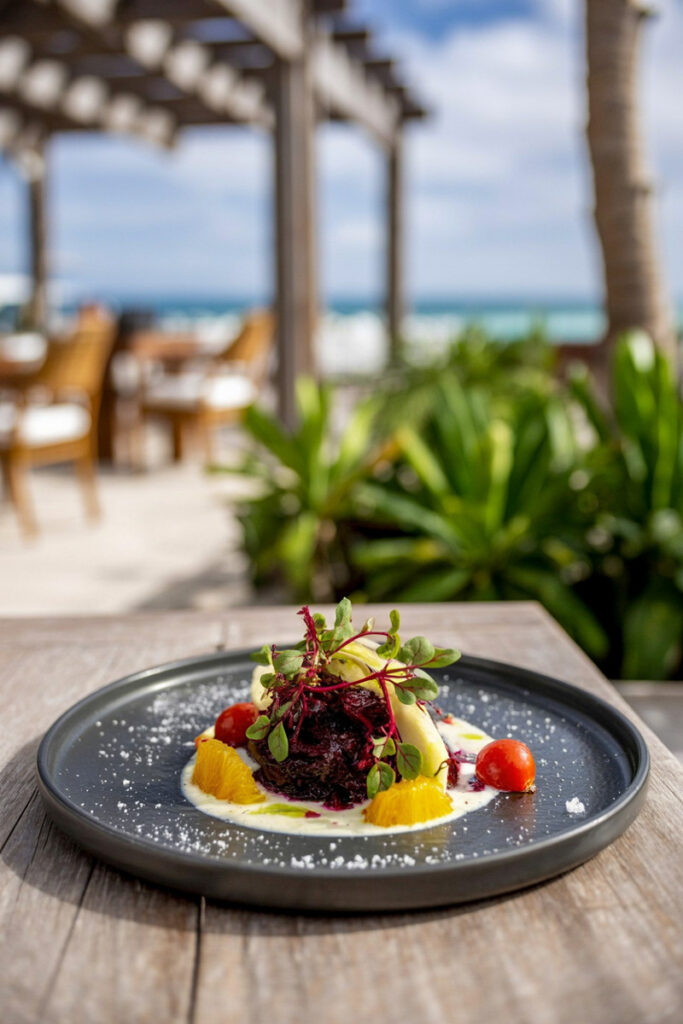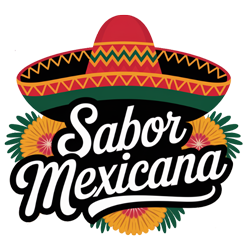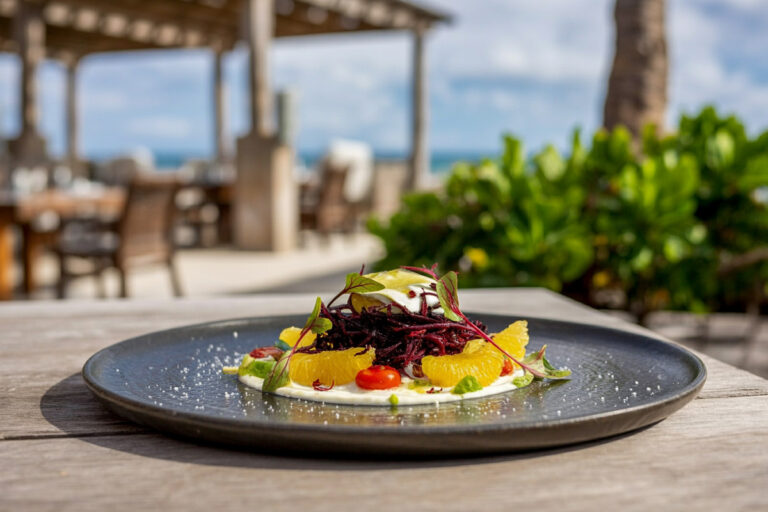The Mexican-Caribbean is a place where turquoise seas, golden beaches, and vibrant coastal towns weave together into a paradise for travelers. Yet beyond its stunning beauty lies another treasure: a culinary tradition deeply rooted in the ocean. The seafood of this region is more than just food—it is heritage, history, and culture served on a plate. From ancient Mayan fishing practices to the blending of Spanish and Caribbean influences, Mexican-Caribbean cuisine tells the story of people and the sea, a narrative built over centuries of tradition.
In this article, we will explore the roots, signature dishes, and cultural significance of seafood traditions in Mexican-Caribbean cuisine, while appreciating how these dishes continue to thrive in modern kitchens and beachfront eateries today.

Ancient Origins and Colonial Influence
Long before Europeans arrived, the Mayan people were already skilled fishermen, relying on the Caribbean’s bounty for sustenance. Conch, lobster, grouper, and shrimp were common catches, often prepared by roasting or steaming in leaves, or marinating in citrus juices available from local fruits. These methods—simple, fresh, and sustainable—remain alive in many traditional recipes today.
The Spanish conquest added another layer of influence. Ingredients such as olive oil, onions, garlic, capers, and olives arrived with colonial trade, and coastal communities adapted them to local seafood. Nowhere is this blending clearer than in Huachinango a la Veracruzana, where red snapper is baked in a Mediterranean-inspired sauce of tomatoes, olives, capers, and herbs. This iconic dish is a culinary symbol of the marriage between Old World flavors and New World ingredients.
By the 19th century, shrimp became a mainstay in coastal Mexican cooking, particularly in Veracruz, Yucatán, and Sinaloa. Dishes such as shrimp cocktails, ceviche, and aguachile grew out of the abundance of this seafood, cementing its place in everyday meals and festive gatherings alike.
The Central Role of Ceviche and Seafood Cocktails
Perhaps no dish better represents Mexican-Caribbean seafood traditions than ceviche. Light, refreshing, and perfect for a hot afternoon, ceviche involves marinating raw fish, shrimp, or conch in lime juice until the acid “cooks” the flesh. Tossed with onions, tomatoes, cilantro, and chili peppers, it balances brightness with spice in a way that is distinctly Mexican.
Regional twists abound. Along the Caribbean coast, conch ceviche is particularly beloved, its chewy texture complementing the tartness of lime. In beachside towns like Playa del Carmen or Tulum, ceviche is often served with crispy tostadas or saltine crackers, accompanied by cold beer or a tangy michelada.
Another popular preparation is Campechana, a seafood cocktail layered with shrimp, crab, octopus, and sometimes clams, swimming in a tangy tomato-based sauce with cilantro and avocado. It’s served in tall glasses, garnished with lime, and enjoyed as both a snack and a hearty meal. These dishes are staples not only for locals but also for tourists eager to taste the freshness of the sea.
Grilled, Roasted, and Marinated Specialties
Beyond ceviche, the Mexican-Caribbean coast is rich with grilled and roasted fish traditions. One of the most celebrated is Tikin Xic, a Mayan dish still widely enjoyed in Yucatán. A whole fish—usually snapper or grouper—is marinated in sour orange juice and achiote paste, wrapped in banana leaves, and roasted slowly until tender. The banana leaf imparts a smoky earthiness, while the achiote gives the fish its signature deep red color. Served with tortillas and rice, it is both rustic and refined, embodying centuries of Mayan heritage.
On the beaches of Quintana Roo, freshly caught lobster is often grilled simply with butter, garlic, and lime. Fishermen sometimes sell lobsters directly to restaurants or prepare them on the beach, where visitors can watch their meal go from sea to grill in minutes. This approach—minimal seasoning, quick grilling—emphasizes freshness and honors the natural flavor of the seafood.
The Spice of the Sea: Shrimp Preparations
Few seafood traditions are as fiery and satisfying as Camarones a la Diabla, or “devil’s shrimp.” This dish features shrimp cooked in a spicy sauce of chili peppers, garlic, and tomato, with heat levels ranging from pleasantly warm to intensely fiery. It reflects a broader Mexican love for chile-based sauces and is popular across coastal communities.
Another shrimp favorite is Aguachile, a dish that originates from the Pacific coast but has found a beloved place in Caribbean kitchens. In this preparation, raw shrimp are submerged in lime juice blended with chili, cilantro, and cucumber, creating a fiery yet refreshing dish that must be eaten quickly before the shrimp cure completely. Aguachile is considered a dish for those who love bold, fresh flavors, embodying both the intensity and simplicity of Mexican coastal cuisine.
Soups and Hearty One-Pot Dishes
Soups and rice dishes also play a central role in Mexican-Caribbean seafood traditions. Caldo de Siete Mares (Seven Seas Soup) is perhaps the most iconic. This hearty tomato-based broth brims with shrimp, octopus, clams, fish, and sometimes crab or lobster. It is comfort food with coastal flair, warming yet light, often enjoyed after a day at sea or as a restorative meal during celebrations.
Equally significant is Arroz a la Tumbada, a one-pot rice dish often compared to Spanish paella. Cooked in clay pots known as cazuelas, the dish begins with a sofrito of tomatoes, onions, garlic, and peppers, before seafood such as shrimp, clams, squid, and white fish are added. The result is a rich, flavorful rice that captures the communal spirit of Mexican family gatherings. Served with lime wedges and tortillas, it reflects both the Spanish influence and the local creativity of coastal cooks.
Lobster, Conch, and Regional Delicacies
In Caribbean towns like Puerto Morelos, lobster is more than a delicacy—it is a culinary emblem. Grilled with garlic butter, served with tropical fruit sauces, or folded into tacos, lobster is prepared in ways that highlight its sweetness and tenderness. Many restaurants feature lobster as a centerpiece dish, often caught the same day from nearby reefs.
Conch also holds a special place in regional cooking. While overfishing has made it less common in some areas, conch remains a beloved ingredient in ceviche and fritters. Its chewy texture and mild flavor lend themselves to both raw and cooked preparations, making it a versatile element in coastal cuisine.
Festivals, Identity, and Modern Relevance
Seafood is more than sustenance in the Mexican-Caribbean—it is central to cultural identity and celebration. Local festivals often feature seafood dishes as highlights, with fishing communities showcasing their culinary traditions. For example, lobster festivals in Quintana Roo celebrate both the sea’s bounty and the local economy it supports.
Today, seafood traditions continue to thrive, thanks in part to tourism. Visitors seek authentic flavors, and restaurants along the coast proudly deliver. Yet modern chefs are also innovating, combining traditional techniques with global influences. From fusion ceviches featuring mango and coconut to fine-dining versions of Tikin Xic, Mexican-Caribbean seafood continues to evolve while preserving its roots.
Sustainability has become an important conversation as well. With growing awareness of overfishing and reef damage, many communities are turning to regulated fishing and sustainable aquaculture to protect both the environment and their culinary heritage.
Conclusion:
The seafood traditions of the Mexican-Caribbean are a living heritage, connecting past and present through the flavors of the sea. From the ancient Mayan technique of roasting fish in banana leaves to the fiery thrill of Camarones a la Diabla, every dish tells a story of adaptation, resilience, and celebration.
To sit by the shore and enjoy a ceviche, a steaming bowl of caldo, or freshly grilled lobster is to taste not only the sea but also centuries of history and culture. These traditions, alive and thriving, remain one of the richest ways to experience the Mexican-Caribbean—a true feast for the senses.

